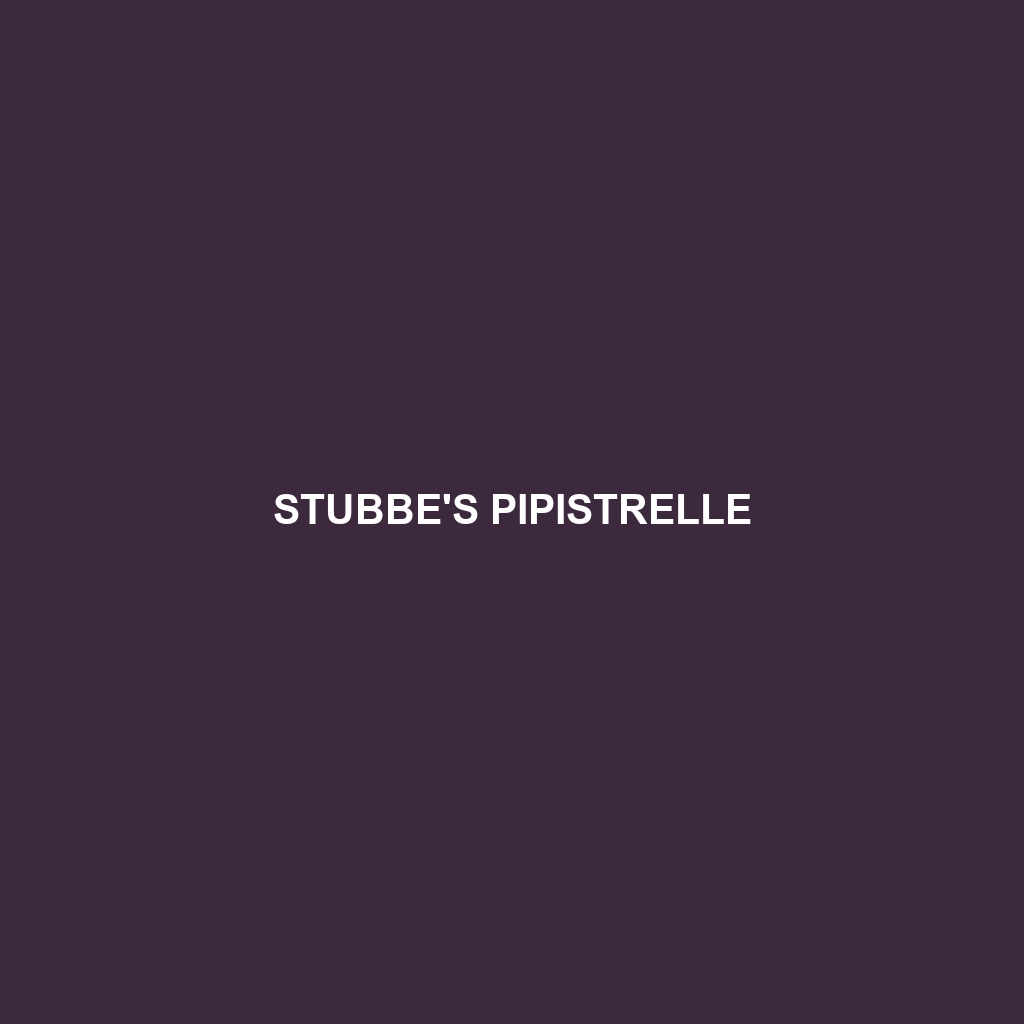Species Description of Stubbe’s Pipistrelle
Common Name: Stubbe’s Pipistrelle
Scientific Name: Hypsugo stubbei
Habitat
Stubbe’s Pipistrelle is primarily found in diverse habitats across Central and Eastern Africa, including regions in Tanzania, Uganda, and Kenya. This species prefers moist forest environments, often residing in subtropical or tropical forests, as well as urban areas that provide ample roosting opportunities in buildings and tree hollows. The availability of water sources nearby is also essential for their survival.
Physical Characteristics
Stubbe’s Pipistrelle is a small bat, typically measuring between 4 to 5 inches in length, with a wingspan of approximately 10 to 12 inches. Its fur is generally soft and dense, exhibiting a brown or gray coloration, with lighter belly fur. Distinctive features include relatively large ears that aid in echolocation, a short tail that extends almost entirely beyond the tail membrane, and dark, rounded wings adapted for agile flight.
Behavior
This species is known for its nocturnal behavior, emerging at dusk to forage. Stubbe’s Pipistrelle is highly social, often found in small groups or colonies. They are agile flyers, showcasing rapid maneuvers while hunting insects. Their echolocation skills are advanced, allowing them to detect prey with precision. This bat typically roosts in sheltered areas during the day and is noted for its ability to adapt to urban environments.
Diet
The diet of Stubbe’s Pipistrelle primarily consists of various flying insects, including moths, beetles, and flies. They hunt their food through echolocation, capturing prey mid-air with their agile flight. Their feeding habits play a crucial role in maintaining insect populations, which supports ecological balance.
Reproduction
Stubbe’s Pipistrelle typically breeds once a year during the warmer months, generally between late spring and early summer. Mating occurs before the onset of the breeding season, with females giving birth to one or two pups after a gestation period of approximately six to eight weeks. The young batlets are nursed for several weeks, relying on their mother’s milk until they can forage independently.
Conservation Status
The current conservation status of Stubbe’s Pipistrelle is listed by the IUCN as Least Concern. However, habitat loss due to deforestation and urbanization poses a potential threat to their populations. Conservation efforts are essential to monitor population trends and ensure the sustainability of their habitats.
Interesting Facts
One fascinating aspect of Stubbe’s Pipistrelle is its remarkable echolocation ability, which allows it to pinpoint prey even in complete darkness. Additionally, they can consume a significant amount of insects in a single night, making them vital allies in controlling pest populations.
Role in Ecosystem
Stubbe’s Pipistrelle plays an important role in its ecosystem by serving as both predator and prey. As insectivores, they help regulate insect populations, which is crucial for agricultural practices and maintaining plant health. Moreover, they serve as a food source for larger predators, contributing to the food web dynamics. Their presence indicates a healthy ecosystem, highlighting their ecological significance.
